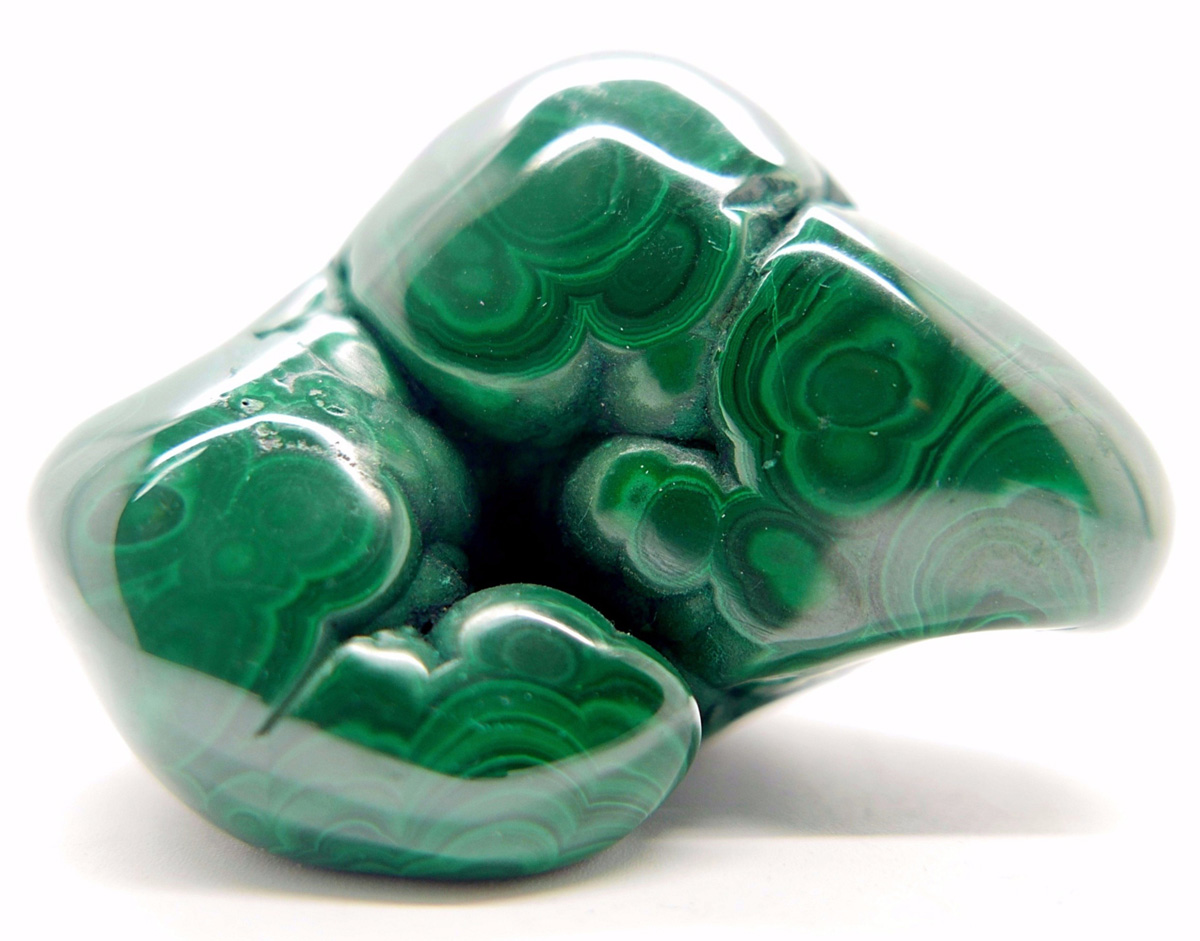
PHYSICAL PROPERTIES
- GROUP Carbonates
- COMPOSITION Cu2CO3(OH)2
- COLOR Intense green
- CRYSTALLINE SYSTEM Monoclinic
- CRYSTALLINE HABIT Massive, botryoidal
- HARDNESS 3.5 - 4
- FRACTURE Subconchoidal to uneven, brittle
- EXFOLIATION Perfect
- GLOSS From adamantine to satin
- STRIP Light green
- TRANSPARENCY Translucent
- SPECIFIC GRAVITY 3.9 - 4.0
MINERALOGICAL CHARACTERISTICS
The malachite is a secondary copper ore that occurs in the form of botryoidal or encrusted masses, normally in a fibrous structure, although it can also occur in renicular aggregates and stalactites with concentric bands, and more rarely, in individual prismatic crystals.
The main characteristic of malachite is the bands of various shades of green, which can be seen through cutting or polishing, making it a mineral that is usually cut in the form of a cabochon for processing jewelry.
Malachite could be considered one of the most important minerals in the history of mankind, since it was directly involved in the development of metallurgy, specialized skills and organized work, after it was discovered that it became native copper when melted with fire (4,000 BC).
In ancient Egypt, malachite was used as a cosmetic for the eyes, as a pigment in murals and glass, and as an amulet. We also find ancient sources that tell us about the medicinal properties of malachite, such as, for example, in the work "Psyca" by Santa Hildegarda de Binguen (XII century).
Deposits: Congo, Russia, Colombia, Hungary, Morocco, United States, Zambia, Romania, South Africa, Zimbabwe, Namibia, China, Australia and France.
THERAPEUTIC PROPERTIES
The malachite is a stone of transformation, cleaning and healing. With intense energy, it combines well with the rose quartz or the green quartz, softer stones that placed together in the 4th chakra, at the level of the heart, promote healing on a holistic level, opening the heart and providing harmony and balance.
It helps calm pain by putting it directly on the place to be treated and it is also used as protection against electromagnetic radiation. It is not suitable for making elixirs as its intake is toxic.


